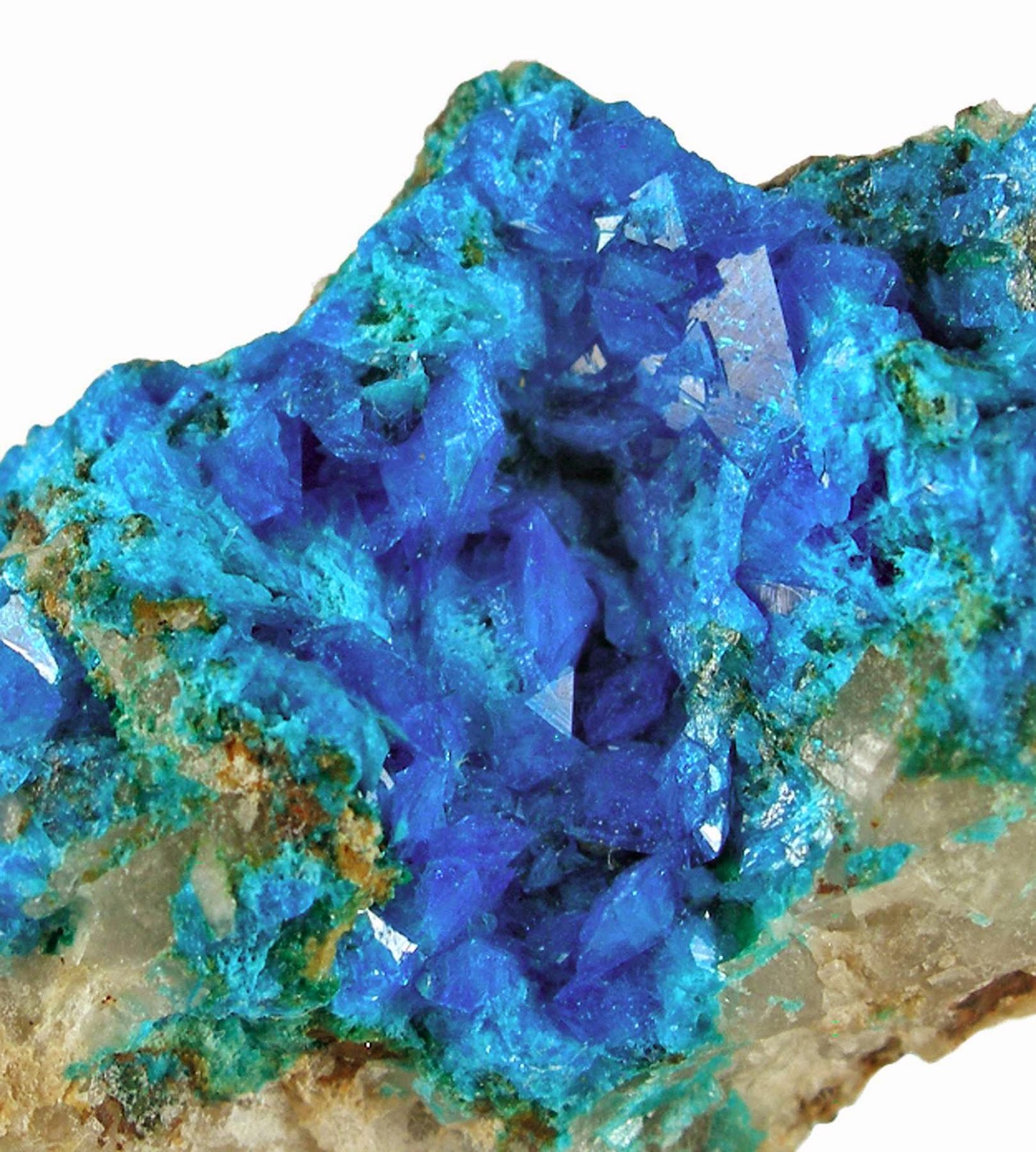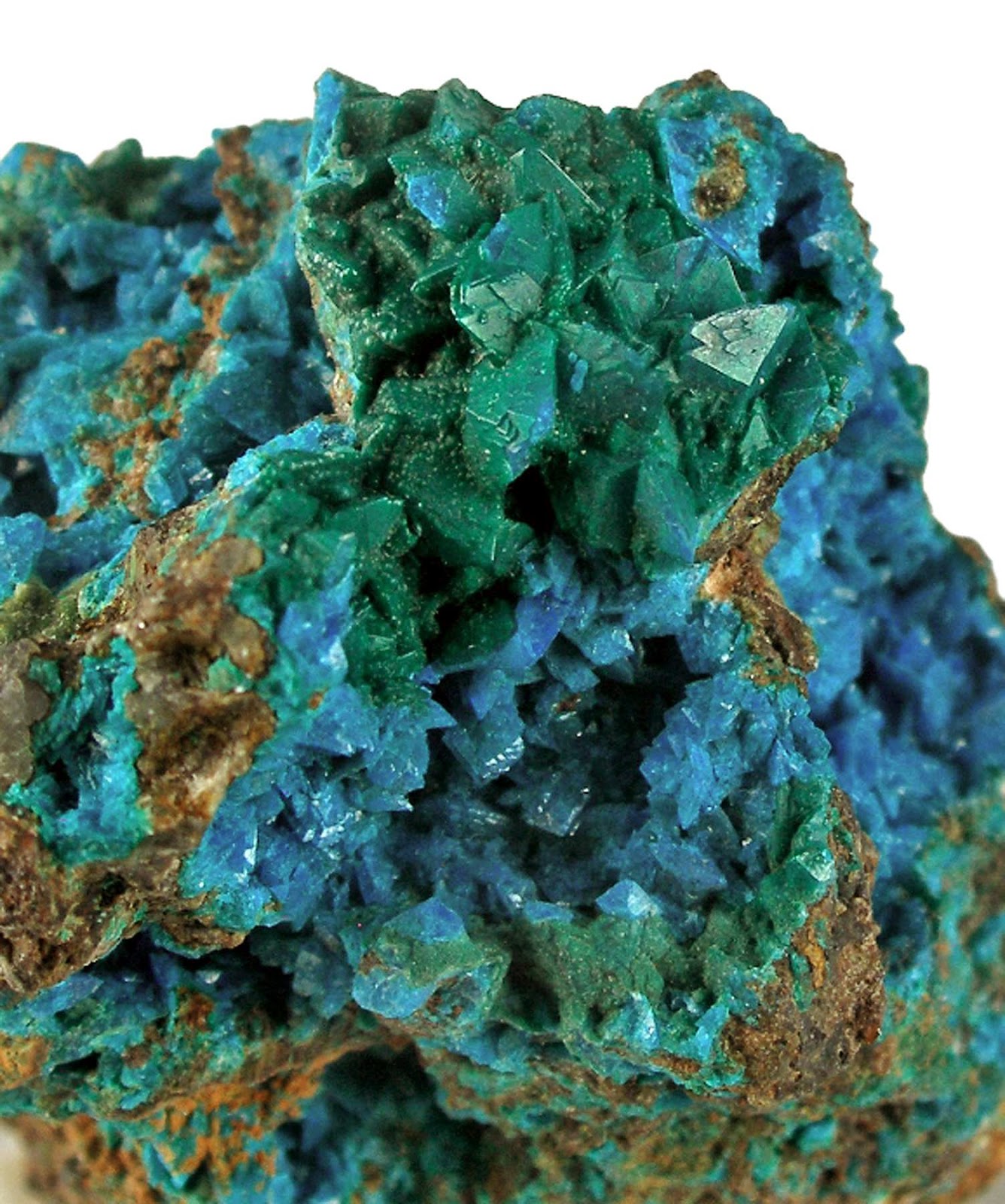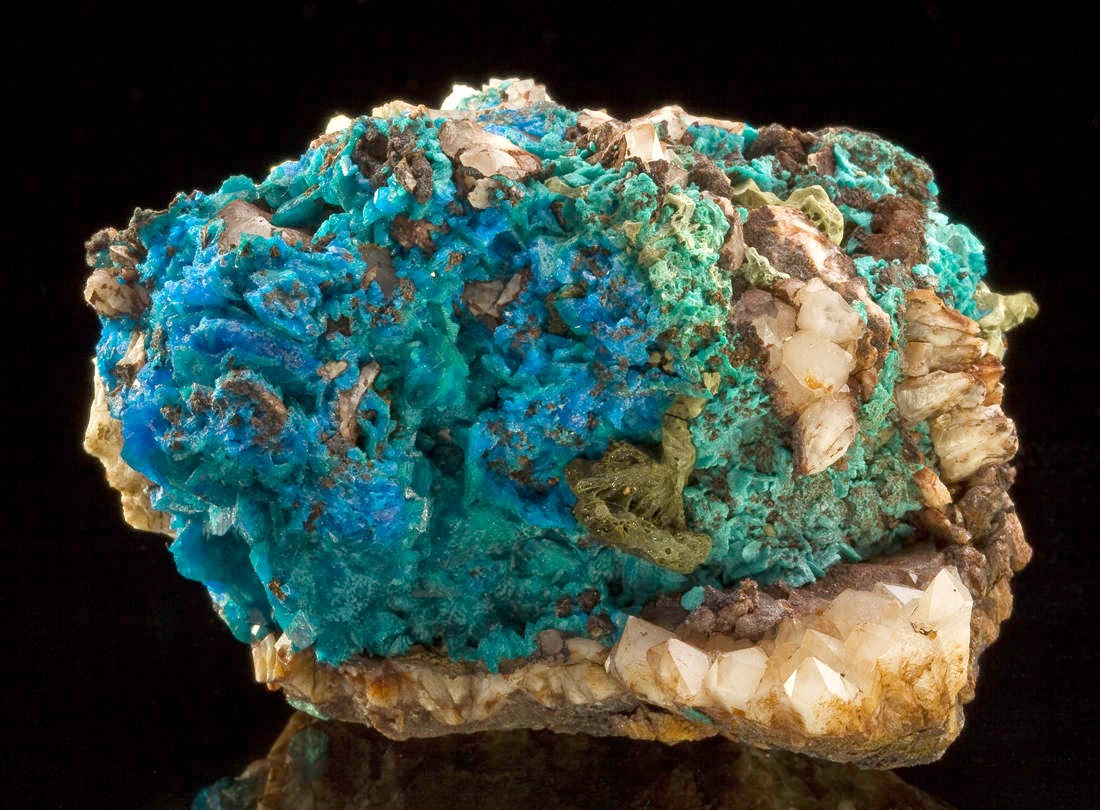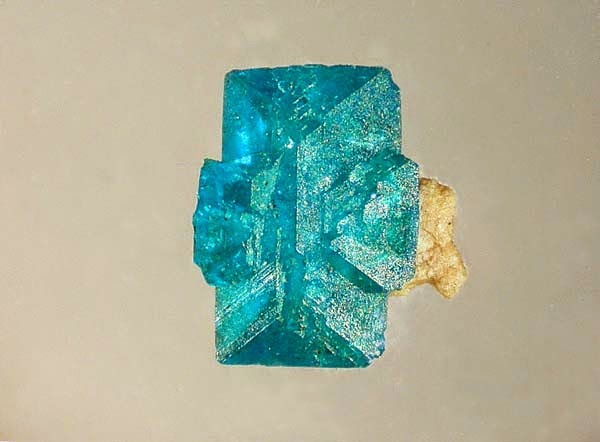
Chemical Formula: Cu2Al(AsO4)(OH)4·4H2O
Locality: Wheal Gorland, Gwennap, Cornwall, England, UK
Name Origin: From the Greek, liros – “pale” and konia – “powder.”
Liroconite is a complex mineral: Hydrated copper aluminium arsenate hydroxide, with the formula Cu2Al(AsO4)(OH)4·4H2O. It is a vitreous monoclinic mineral, colored bright blue to green, often associated with malachite, azurite, olivenite, and clinoclase. It is quite soft, with a Mohs hardness of 2 – 2.5, and has a specific gravity of 2.9 – 3.0.
It was first identified in 1825 in the tin and copper mines of Devon and Cornwall, England. Although it remains quite rare it has subsequently been identified in a variety of locations including France, Germany, Australia, New Jersey and California.
The type locality for Liroconite is Wheal Gorland in St Day, Cornwall in the United Kingdom.
It occurs as a secondary mineral in copper deposits in association with olivenite, chalcophyllite, clinoclase, cornwallite, strashimirite, malachite, cuprite and limonite.
History
Discovery date : 1825
Town of Origin: REDRUTH ET ST. DAY, CORNOUAILLES
Country of Origin : ANGLETERRE
Optical properties
Optical and misc. Properties: Transparent to Translucent
Refractive Index: from 1,61 to 1,67 / de 1,61 à 1,67
Axial angle 2V : ~72°
Physical Properties
Cleavage: {100} Indistinct, {011} Indistinct
Color: Light blue, Green, Sky blue, Verdigris green.
Density: 2.9 – 3, Average = 2.95
Diaphaneity: Transparent to Translucent
Fracture: Sub Conchoidal – Fractures developed in brittle materials characterized by semi-curving surfaces.
Hardness: 2-2.5 – Gypsum-Finger Nail
Luminescence: Non-fluorescent.
Luster: Vitreous – Resinous
Streak: light blue
Photos:













